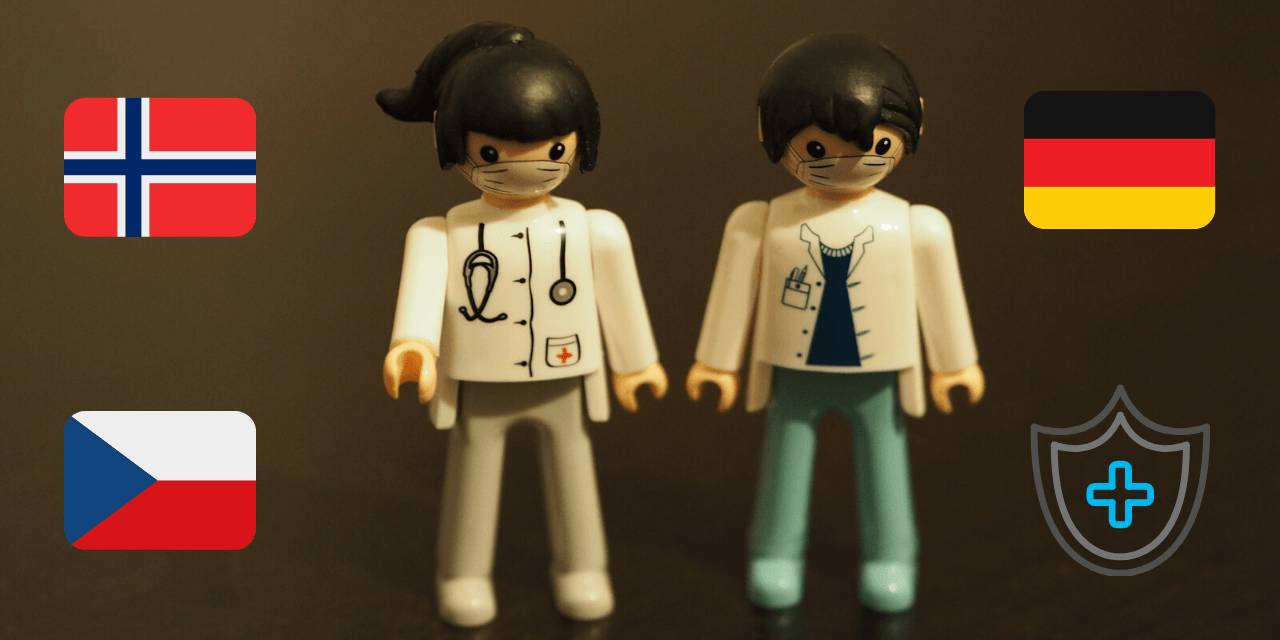
The coronavirus has become an integral part of everyday life. In January we were surprised by the bizarre lockdown in China. Less than six months later, we in Europe can look back on our own variants of the “draconian” policy that no one thought possible.
For Europe, the misery started in the middle of February. All of a sudden, the north of Italy had to contend with a sharp increase in COVID-19 infections. Via Lombardy and later Austria and Switzerland, the virus spread to every corner of the continent in the following weeks.
The governments were presented with a diabolical dilemma: What to do? In this series of four articles, we take a closer look at the strategies of various countries in Europe and the rest of the world. Where did it go well and where did it go wrong? After clumsiness and regret in the previous article, this one focuses on the three European success stories.
Norway – Fast Scandinavian switching
Between February 17th and 24th it was the winter holiday in Norway. Since Norwegians are extremely fanatical winter sportsmen, they traveled en masse to Austria and Italy during that week. Once at home a few weeks later, hundreds of them turned out to have contracted COVID-19. The virus spread much faster in the early days of March than in neighboring countries. On March 12th – six days before the Netherlands – the country went into lockdown so as to turn the tide. These restrictions were less far-reaching than in France, but there were more closures in Norway than in Germany, for example.
Less than a month later, the pandemic was under control, according to the health minister Bent Høie. While large parts of Europe were in the worst phase at the beginning of April, the alarm had already been sounded for the Norwegians. Because of the rapid intervention, few infections, many tests, and the fairly generous capacity at the intensive care centers, COVID-19 never really posed a threat in this country. Test, trace, and isolate has been the strategy to this day. Countries like Denmark, Finland and the Baltic States implemented a similar strategy.
Three months later, the figures speak for themselves: 8,862 diagnoses and only 249 deaths. The pace at which the sparsely populated and stony Scandinavian country got the situation under control is quite impressive. In the early days, Norway seemed to take the biggest hit from the Scandinavian countries, but by acting quickly, the epidemic was quickly contained. The difference to neighboring Sweden is now like day and night with a relative mortality rate that is no less than 11 times lower.

Germany – Decentralized German thoroughness in corona times
The fact that Germany was resistant to a pandemic will raise few eyebrows. This was pretty clear from the beginning. The official death toll speaks for itself: just over 9,000, which is very low compared to other large EU countries such as France (29,778), Spain (28,343), and Great Britain (43,575). Germany actually did the same as Norway, but in a country that is 17 times larger.
The country was able to massively scale up the capacity of intensive care within a few weeks, tested extensively, and found very severe lockdown measures unnecessary. The country was locked down at the federal level on March 22nd, much later than most other European countries. Yet the problems were never really big here. In fact, the hospital beds were so widely available that the Germans allowed patients from neighboring countries.
A large part of the corona policy was determined by the 17 states. Contrary to France, for example, this made it possible to implement a decentralized pandemic policy right from the start. They have further developed this decentralized mindset so that lockdowns can now be carried out per district, which each have a few hundred thousand inhabitants. Warendorf and Gütersloh in North Rhine-Westphalia showed a considerable peak in the number of infections in recent weeks. Putting the whole of North Rhine-Westphalia – 17 million inhabitants – under lock and key was therefore deemed unnecessary.
This month, the Germans were the first in Europe to launch their corona app, which has already been downloaded 12 million times, is actually functional and has not frightened privacy enthusiasts.
Czech Republic – Listening to Taiwan: A good plan
The fact that Norway and Germany would cope well with the crisis has to a large extent to do with the quality of their healthcare systems and the fact that they are fairly wealthy countries. Still, the Czech Republic proves that even with fewer medical resources and financial means, you can survive a pandemic like this. How can it be done? With the right allies. One of the main reasons why COVID-19 could grow into a pandemic was the initial cover-up policy in China. After all, things weren’t supposed to be all that bad with this ‘flu.’
If there is a country that distrusts information from China, it is Taiwan. In January, the world tried to warn of the dangers of the coronavirus, but these ominous noises were directed at deaf ears at the WHO, among others. Following a diplomatic conflict over sister cities with China, the Czech Republic has quickly become a loyal ally of Taiwan, which already began sharing its highly successful strategy with the Czechs in January. As early as February 8th, air traffic to and from China was suspended.
The Czech Republic, like Norway, went into a rather strict lockdown on March 12th, after less than one hundred positive diagnoses had been counted, but tackled it much more drastically. Drive-in test sites were already operational on March 14th and because the Czechs, thanks to their Asian ally, knew what was coming, there has never been a shortage of face masks there, which became mandatory on March 19th. Transparency, public support, innovative solutions and clear communication have always been top priorities.
With only 348 deaths out of 11,604 infections, the country can measure up to the European champions in terms of low mortality. Other Eastern European countries such as Poland, Hungary, and Slovakia that followed suit also had few problems with the first wave of the pandemic. This pro-active strategy has ensured that Slovakia has the lowest number of positive diagnoses per capita in the whole of Europe. And Taiwan? With only 447 infections and 7 victims, it is now seen as the world champion in COVID-19.
The countries in this article do not necessarily rank as the three “best” corona countries. Hungary, Estonia, Finland, Bulgaria, Austria, Switzerland, Slovakia and Greece can also speak of a fairly adequate corona policy. The data used for the complementary information maps are publicly accessible via Google Sheet.








